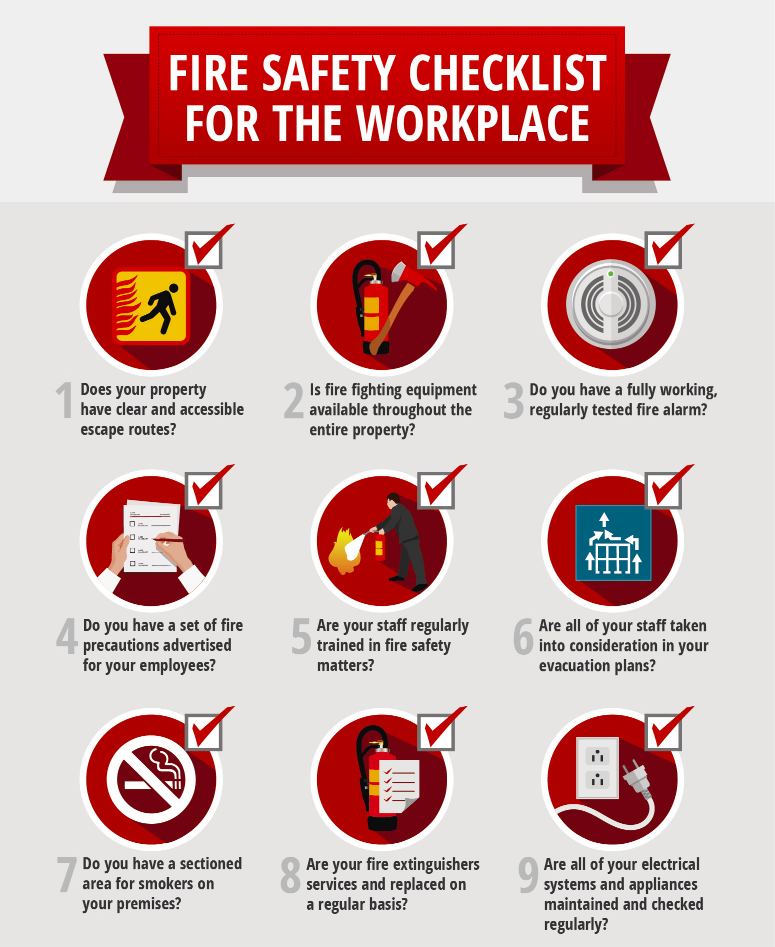There is a risk of fire in every workplace. Fire hazards can arise in a variety of environments or while undertaking certain activities. Of course, the risk of fire is more likely in situations when flammable chemicals or combustible materials are being used, but even in offices and other lower-risk environments, the risk of fire is always prevalent. That’s why fire safety and emergency procedures in the workplace are so important.
You must be aware of the fire hazards in your workplace and take all reasonable steps to eliminate or reduce the risk of a fire or explosion. Not only is this important for the safety of your workers, you also have a legal obligation to do so under health and safety legislation.
Follow these steps to reduce the fire risk in your workplace:
- Identify fire hazards in your workplace, e.g. presence of ignition sources (heaters, lighting, electrical equipment, etc.) and fuel (packaging, plastics, rubber, petrol, chemicals, etc.).
- Assess the risks posed by the hazards that you’ve identified – this will determine which hazards need the most urgent attention.
- Put measures in place to control the risks – the hierarchy of control is a useful tool to use here, e.g. eliminate work processes that could generate an explosive atmosphere, service and clean all machinery as recommended by manufacturers, switch off electricity points when the business is unattended, remove waste material (e.g. fuel) that could act as fuel, store and dispose of flammable substances correctly.
- Monitor the hazards and review the controls – this will ensure that the controls are minimising the risks effectively.
